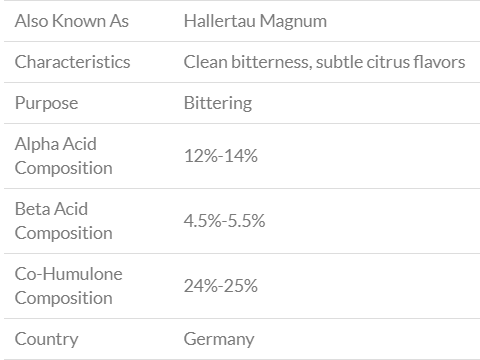筆記一下用過的跟手邊有的啤酒花香味跟成品心得![]()
來源: hopslist.com
Centennial
Centennial owes its existence to a mix of Brewer’s Gold, Fuggle, East Kent Golding and Bavarian hops. Developed in 1974 and released in 1990, Centennial was pioneered by Charles (Chuck) Zimmerman and S.T. Kenny at Washington State University. It is at times referred to as super Cascade because of its similar citric characteristic. Centennial is a much-celebrated hop in its versatility with its depth of bitterness and forward aroma — two characteristics that balance each other beautifully.
It is well suited to Pale Ales and IPAs with its high alpha content and is floral in both flavor and aroma. Centennial has had its ups and downs in the commercial brewing industry but is currently experiencing a return to popularity, particularly among leading craft breweries.

Chinook
Chinook hops are suitable for any stage of the boil. They’re not only a natural for American-style Pale Ales and IPAs, but they also find their way into seasonal ales, barley wine and some porters and stouts. The variety is a cross between Petham Golding and a USDA male and features a pine-like, spicy bouquet with robust flavors of grapefruit.
Released in 1985, Chinook has recently grown in popularity, particularly among craft breweries. Currently, they’re commercially featured alone in Stone’s Arrogant Bastard and in addition to Cascade and Centennial in Sierra Nevada’s Celebration Ale – a brew famous for its piney, citrusy character.

Citra®
American aroma hop Citra was created by John I. Haas, Inc. and Select Botanicals Group joint venture, the Hop Breeding Company. It was released to the brewing world in 2008. Now one of the most coveted high-impact aroma hops in the US, particularly among craft brewers, it boasts a complex lineage that includes the likes of Hallertau Mittelfrüh (father), Tettnanger (US), Brewer’s Gold and East Kent Golding.
Gene Probasco is credited with having first bred Citra in 1990. After trialing the new variety with iconic craft breweries Deschutes, Sierra Nevada and others, commercial acreage was significantly expanded in the lead up to its official release.
Citra, as the name implies, has a strong citrusy profile. This is largely credited to its very high myrcene content. It has an extraordinary flavor profile of grapefruit, lime and tropical fruits but despite its high alphas, brewers often warn against its use for bittering, which is considered by some to be harsh and undesirable.

Hallertau
Hallertau, Hallertauer and Hallertauer Mittelfrüher are all names for the original German Hallertau variety. Dating back more than 100 years, it stems from an old German landrace and is one of the original four “noble” hops. It features a lightly flowery and spicy aroma.
Though its popularity has been steadily declining over the past 50 years — primarily as a result of grave susceptibility to verticillium wilt and poor yields — it has been used to create a multitude of offspring, most of which are wilt tolerant.

Hallertau Blanc
Hallertau Blanc, daughter of Cascade, was released to the world in 2012. Established on the Hüll farm in the German Hallertau region, it was grown primarily for use in American-style Ales. Hallertau Blanc’s flavor profile is said to be fruity, with wine-like qualities of gooseberry and grass, similar to that of Sauvignon Blanc. It also features a complex aroma profile with notes of cassis and elderflower in addition to grapes, grapefruit and lemongrass. Other notes detected in trials have been passionfruit, pineapple and gooseberry.

Magnum
Magnum is fast becoming a brewing favorite in Europe and towards being one of the most widely grown high alpha varieties in the US. Used predominately as a base bittering hop it features an exceptional growth rate, yield and superlative storage stability and is said to result in squeaky clean bitterness and subtle citrus-like flavors.
Originally created at the German Hop Institute in Hull, Magnum was released to the brewing world in 1980 and has since been recognized as being most suited to pale ales and lagers where a clean bitterness is desired. It is the result of a cross between Galena and an unnamed German male variety.

Mandarina Bavaria
Daughter of Cascade (US), Hallertau Blanc and Hüll Melon, Mandarina Bavaria originated in Hüll, Germany and was released to the brewing masses in 2012. It is useful for both flavor and aroma and imparts slightly sweet notes of tangerine and citrus, especially when used for dry hopping.

Saphir
Released in 2002, Saphir features elements of spice and fruit amid refined citrus notes of tangerine. It is considered well suited to Belgian Whites as well as Pilsners and German Lagers.
Bred at the Hop Research Center in Hüll, the initial goal of its creators was to produce a more commercially viable alternative to Hallertau Mittelfrüh through increased disease resistance and the retention of Hallertau’s noble characteristics. In that capacity, Saphir would most certainly be considered a success.

Sorachi Ace
If you’ve ever enjoyed Sapporo, then you know what Sorachi Ace can do. Originally produced by the Sapporo Brewery in Hokkaido, Japan in the mid-1980s, it was resurrected in the US in 2006. It is a cross between Saaz, Brewer’s Gold and BeiKei No. 2.
Sorachi Ace is considered excellent in several beer styles, particularly those desiring a distinct lemon citrus flavor. Some brewers have even reported flavors of orange, cilantro, dill and oak.



 留言列表
留言列表
